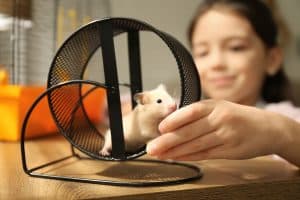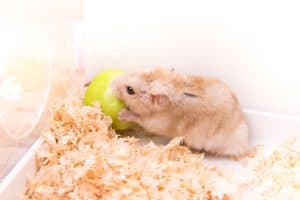Have you noticed a bald patch or two on your hamster? If so, you’re probably concerned. We’ve researched why this happens so you can determine whether this hair loss is benign or more serious.
Hamsters can go bald from repeated friction against bowls, toys, and other abrasive items in their cage. This can include bedding. In other instances, diseases, parasites, excess moisture, nursing, or dietary deficiencies could be at blame.
You’re probably eager for more info so you can preserve your hammy’s luxurious coat. Read on, as we’ll talk about each of these balding causes in more detail. We’ll also discuss how much hair loss is normal and how to prevent future balding.
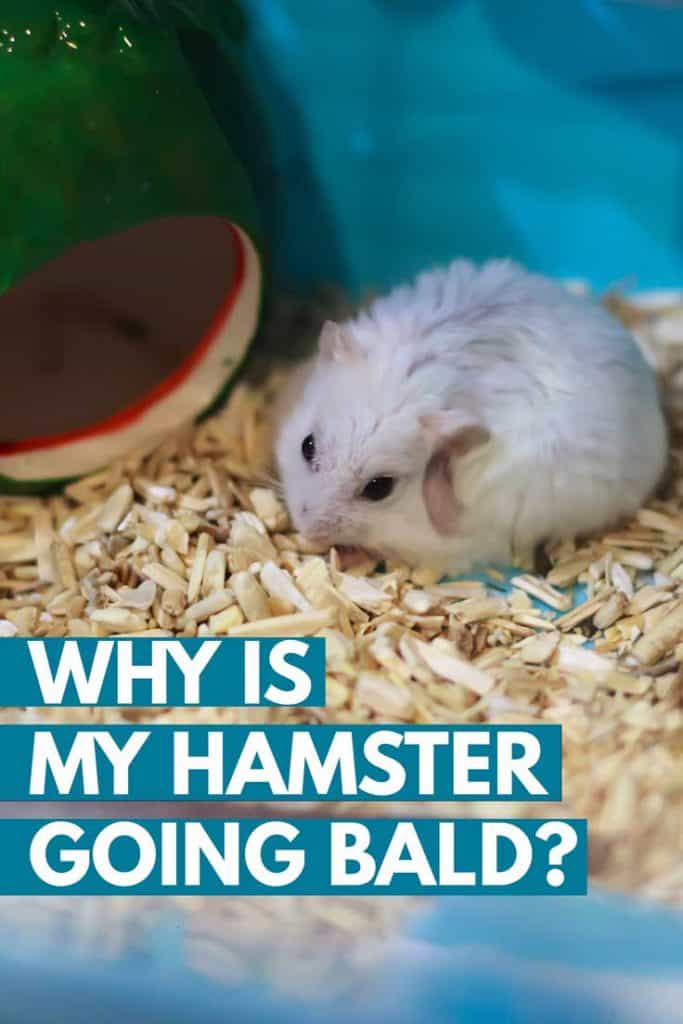
Reasons a Hamster Goes Bald
There are several possible reasons for a hamster to lose some of its hair, often in the form of bald patches.
These reasons include -
- Rubbing against items in the cage
- Exposure to excessive moisture
- Parasites
- Nutritional deficiencies
- Diseases
- Nursing stress following a birth
- Old age
Let's take a closer look.
1. Rubbing against abrasive items in the cage
Hamsters engage in a lot of activities that involve friction. They could burrow deep in their enclosure, hiding beneath their bedding. Their toys are not only for playing with but for rubbing on as well. What’s worse is when your hammy starts rubbing on harder surfaces, like the walls of their cage or worn-down plastic bowls or toys.
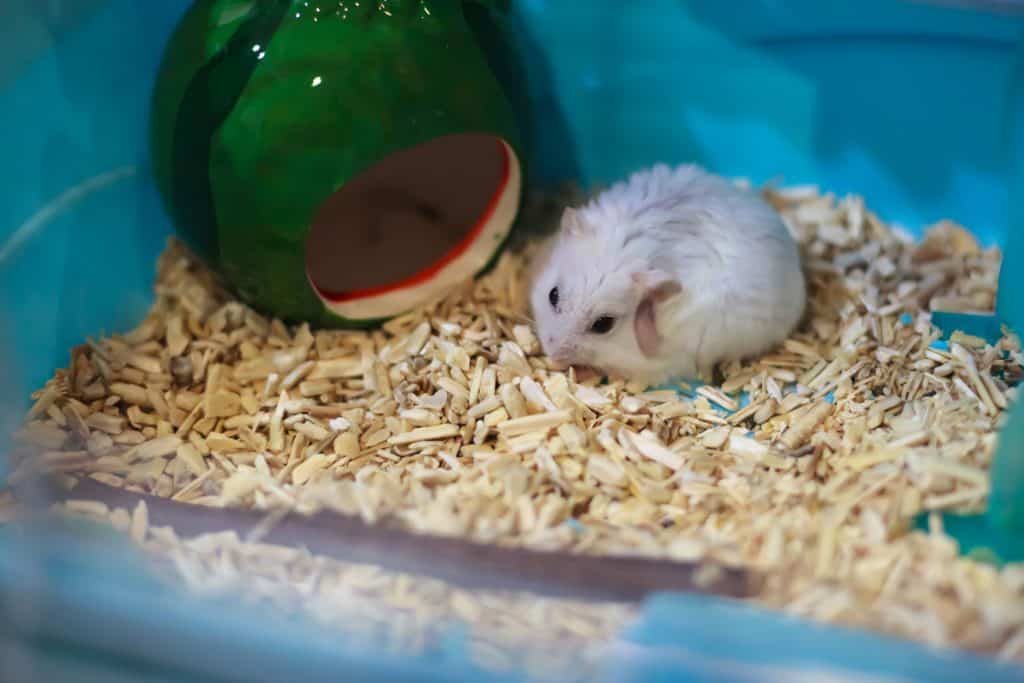
All this behavior can lead to bald patches. The best way to tell if the hair loss is environmental is to look at where it occurs. If you always see your hamster rubbing one side of their body against their cage and that same side is balding, you probably found your culprit.
2. Exposure to moisture
If you have an old water bottle in your hamster’s cage that’s begun to leak, this too can be another reason balding occurs. Moisture affects a hamster’s fur the same way it does human hair. All that extra water is detrimental to healthy hair growth.
3. Parasites
When your fuzzy friend has an infestation of mites, ringworm, fleas, and/or ticks, they’ll do anything they can to get relief, including scratching themselves bald. Once your hamster sees a vet for parasite treatment, the itching should stop and the fur should grow back.
4. Dietary Deficiencies
What are you feeding your hamster? A poor diet can impact more than just hammy’s weight. It can also influence their overall health. If your hamster lacks protein or B vitamins in their diet, then balding is to be expected.
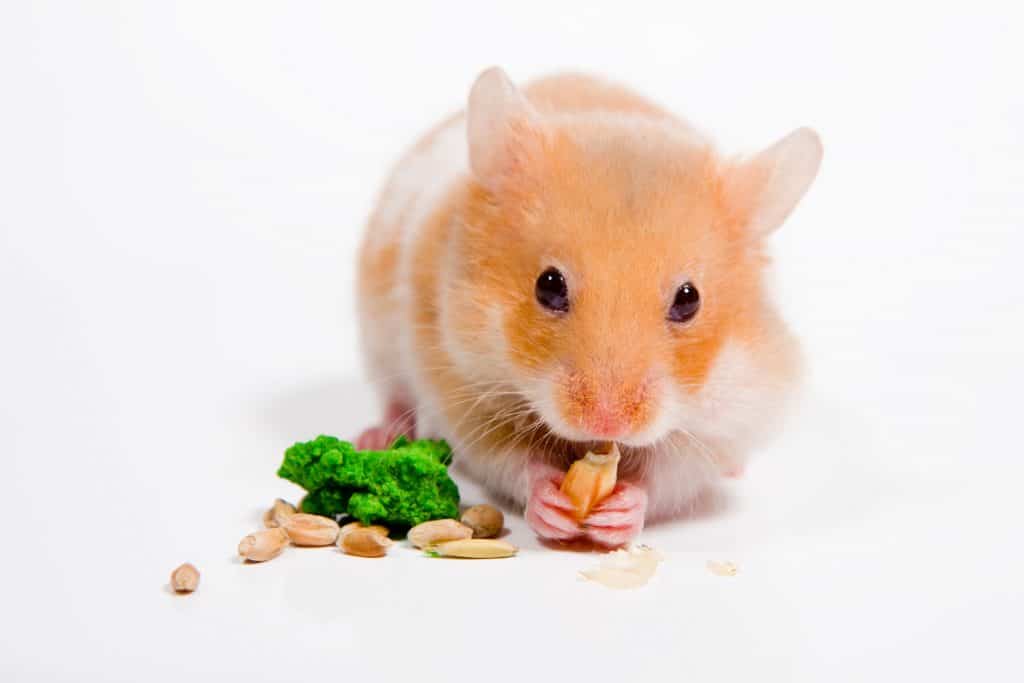
All eight vitamins in the B vitamin family can boost natural hair growth. These include folate or folic acid, biotin, pantothenic acid, niacin, riboflavin, and thiamine.
5. Diseases and Illnesses
Hormonal imbalances, kidney inflammation, and T-cell lymphoma can all lead to balding. If you suspect it could be a more serious health issue, then you shouldn’t wait to see your veterinarian. In fact, for any prolonged balding, a trip to the vet can rule out more serious issues and get your hamster on the fast track to a healthier coat.
6. Nursing After Birth
Has your female hamster recently given birth to a litter of adorable pups? You may have noticed her fur seems to have all but disappeared. This isn’t simply the stress of becoming a new mother. As female hamsters nurse their babies, it’s common for some of their fur to fall off.
Just give it time in this instance. When the babies begin consuming foods besides their mother’s milk, your hamster’s fur should start re-growing.
7. Old age

The biggest reason hamsters begin losing fur is their age. Just like some people go bald as they get older, the same can be said for our hammies. Here’s a user account of such a thing happening from the Hamster Hideout forum. If your hamster is at least two years old, then it’s natural and normal to see hair loss.
Is It Normal for a Hamster to Lose Fur? How Much?
Not all hamster balding is something to be concerned about. Depending on which species you have, your hammy might shed. Robos and Chinese dwarves don’t shed much, but Russian and Syrian hamsters definitely do.
Also, hamsters molt, so they’ll lose more fur regardless of species. During molting, they’re making room for fresh fur by getting rid of the old stuff. This is a biannual process that happens in the fall and the spring. If your hamster is losing fur around these times, then it’s probably because they’re molting. It’s rarely anything to stress about.
Another way to tell if your hamster is balding versus molting is how much fur is gone. The fur loss should be minimal when they molt, with only thin amounts coming off. If there are thick tufts of fur in your hamster’s enclosure, there’s probably a more serious problem at play.
Tips for Preventing Balding
Know the Symptoms of Parasite Infestation
Parasites can be internal or external. It’s much easier to diagnose external parasites because you can possibly see the parasites themselves. If not, then it’s hard to miss the skin scabbing, scratching and itching, dandruff flakes, and balding that occur.
If the parasites are internal, such as pinworm or tapeworm infestations, then the hamster may be asymptomatic. This means they exhibit no symptoms. Still, you can often tell there’s something wrong. Your fuzzy friend could have discoloration and swelling around the anus or abdomen. They may also be constipated and quickly drop weight.
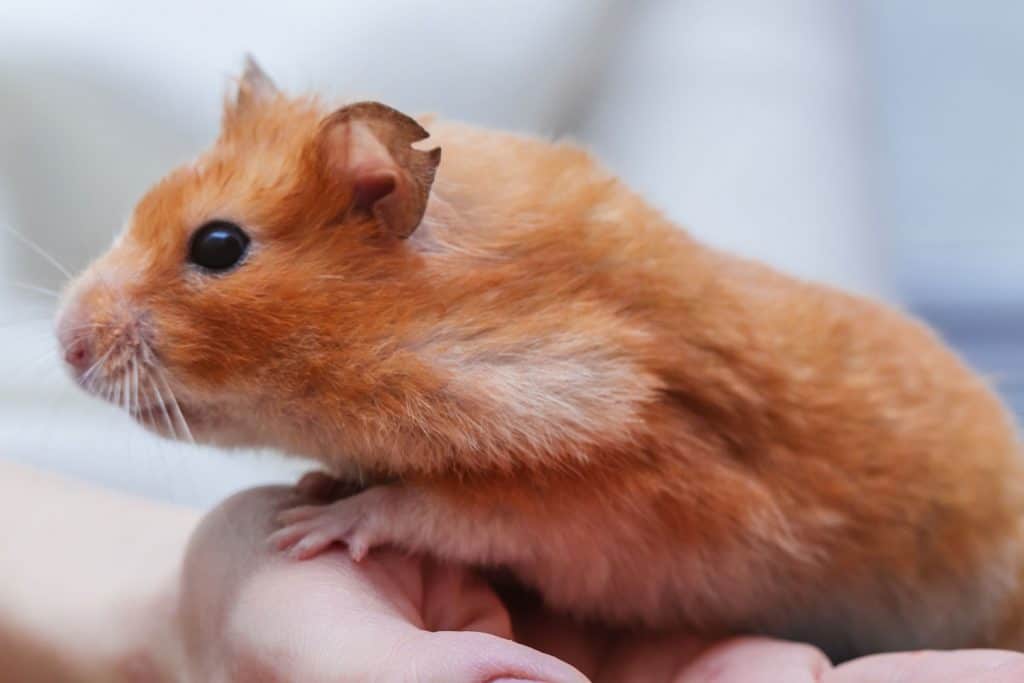
Whether external or internal, a case of parasites in a hamster necessitates veterinary care. Your vet will probably put hammy on a special medication to rid them of the parasites. Once your pet is parasite-free, you should try your best to keep them that way. The best way to do this is provide a clean enclosure. Your hamster will take care of cleaning themselves (no water baths necessary!).
Read more:
- Can hamsters get fleas (and what to do about it)
- Bathing Your Hamster: What Every Owner Needs to Know
Supplement Your Hamster’s Diet
Balding caused from nutritional deficiencies also warrants a trip to the vet. After an assessment, your vet can make the call on which foods and supplements can treat the deficiency.
There are many dietary changes that can be done, such as adding:
- Vegetables and fruits
- Whole-wheat pasta
- Cooked eggs
- Cheese
- Unsweetened cereal
If you are giving your hamster the above foods, it should be in small quantities only. Ask your vet how many times a week to feed your hammy these foods.
A word about adding commercial nutritional supplements
Never supplement any pet's diet without instructions from your veterinarian.
Excessive use of supplement can cause more harm than good.
It’s also important to track your hamster’s iron and protein levels. They can get iron through dried fruit, iron-fortified cereal, and small portions of hard-boiled eggs. Protein comes from hamster food as well as cooked beans, tofu, and unsalted, raw peanuts. As always, before making such huge diet changes, talk to your vet.
You also have to be careful about giving your hammy too much protein. It could harm their kidneys. Their entire diet should consist of only some protein, roughly 16 percent, but no more than that.
Watch What You Feed Your Hamster
Not all diet deficiencies are about what you don’t give your hamster. Sometimes, feeding them too much of something can lead to a deficiency as well. For instance, sunflower seeds, when consumed in large quantities, can contribute to balding.
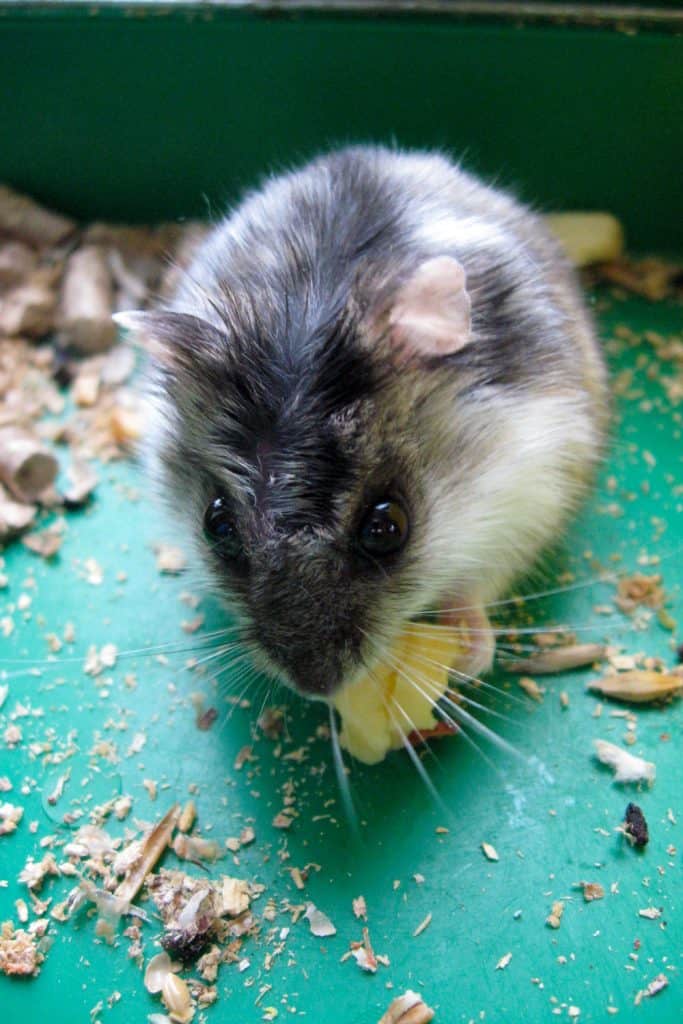
While you should always check with your vet, substituting dried fruit, barley, locust beans, corn, or dried peas is best.
Replace Bowls and Toys
If the hard edges of your hamster’s bowls and toys are causing them to lose fur, then change out these items. Look for smoother, rounded edges. That doesn’t mean your hamster will stop rubbing up against their favorite items, but at least doing so will cause them less damage.
Read more: What you should put in your hamster's cage
Monitor Cage Rubbing
Another inevitable behavior is rubbing at their cage. This is due to the hamster’s scent glands, which are found in the hips. To spread its scent, your hammy will want to rub on anything and everything, sometimes including you. This is more common in some hamster species than others, such as Syrians. Females are also more likely to do this than males.
The behavior is normal and natural, but it can lead to balding. Therefore, the best you can do is monitor how much your hamster is rubbing against their cage. If the behavior is causing bald spots to develop, then get the hamster away from the cage for a while.
You can also give them a softer housing option, such as this cozy hamster house on Amazon. It gives hammy something else to rub against that won’t cause them to lose fur.
Buy New Bedding
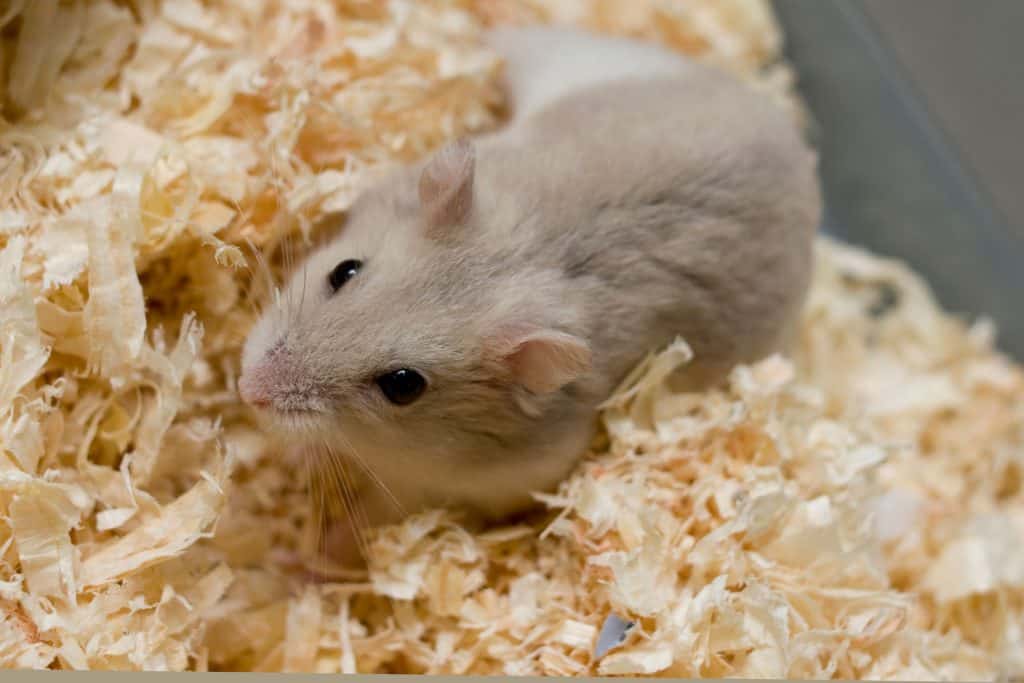
If you’re using cedar or pine wood shavings as your hamster’s bedding, you’ll need to move to softer stuff. These wood shavings can easily splinter off, giving your hamster an infection or injuring them. Not only that, but this bedding isn’t soft at all. Whether from sleeping, burrowing, or regular use, it’s possible for your hammy to lose its fur.
If you must use wood shavings, then move to aspen wood instead. It’s softer than cedar or pine wood shavings.
Read more: Do Hamsters Burrow? (And What You Need to Do About That)
Give Your Hamster Their Prescribed Medication/Treatment
Finally, if your vet prescribes your hamster a medication or other treatment, make sure you follow the use instructions to the letter. While it takes time for fur to grow back, you must eliminate your pet’s illness or deficiency before that can happen.
Minor Hair Loss Is Normal, but Balding Isn’t!
Hamster balding can be caused by rough bedding and toys, diseases and parasites, nursing, nutritional deficiencies, and rubbing on hard surfaces. While some hair loss is natural and nothing to worry about, bald patches are definitely worth a trip to the vet.
Hamsters going bald is really bad, but there are other health-related issues with hamsters. Check it out 7 Hamster Health Issues Every Owner Needs to Know About.

